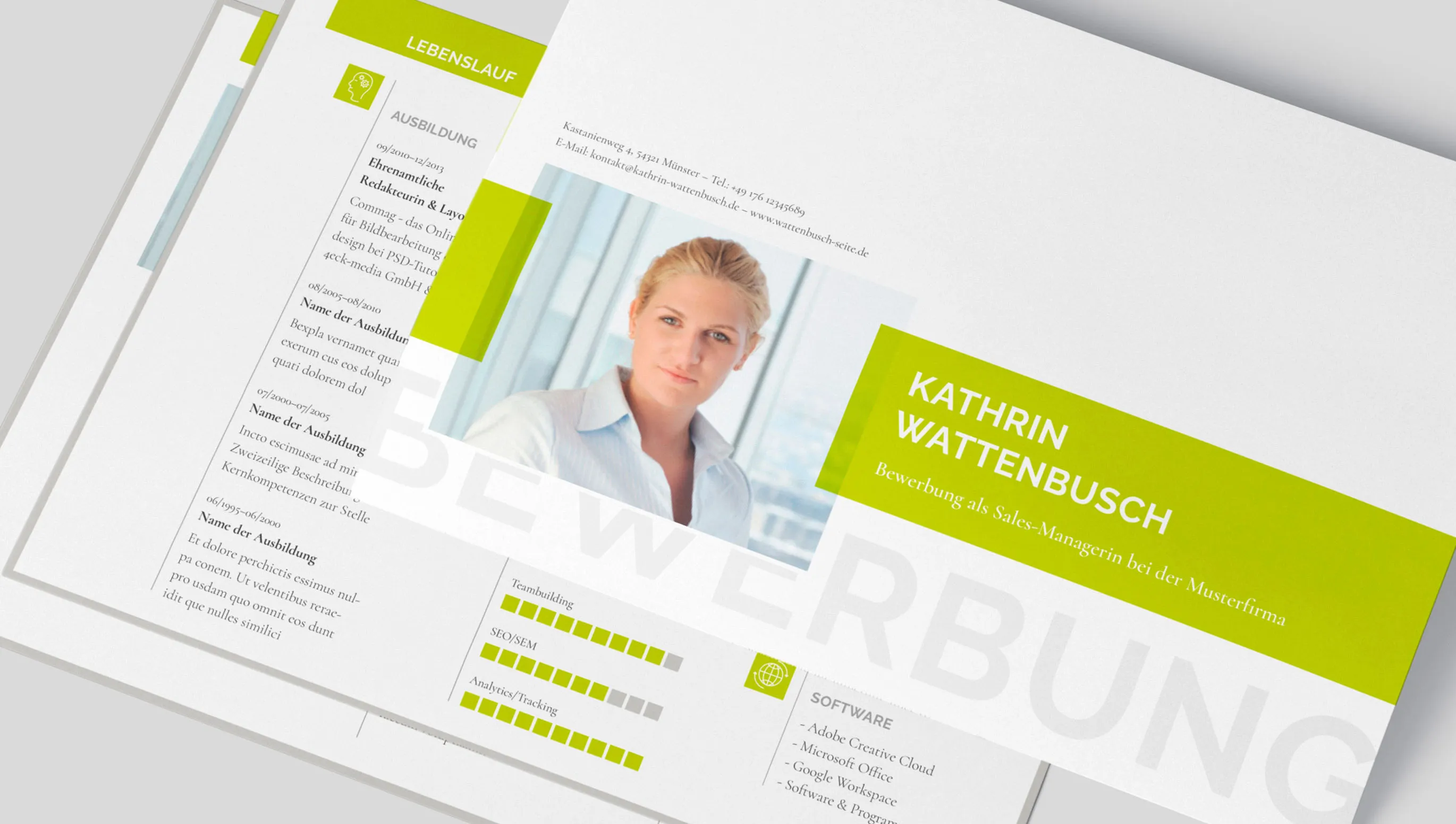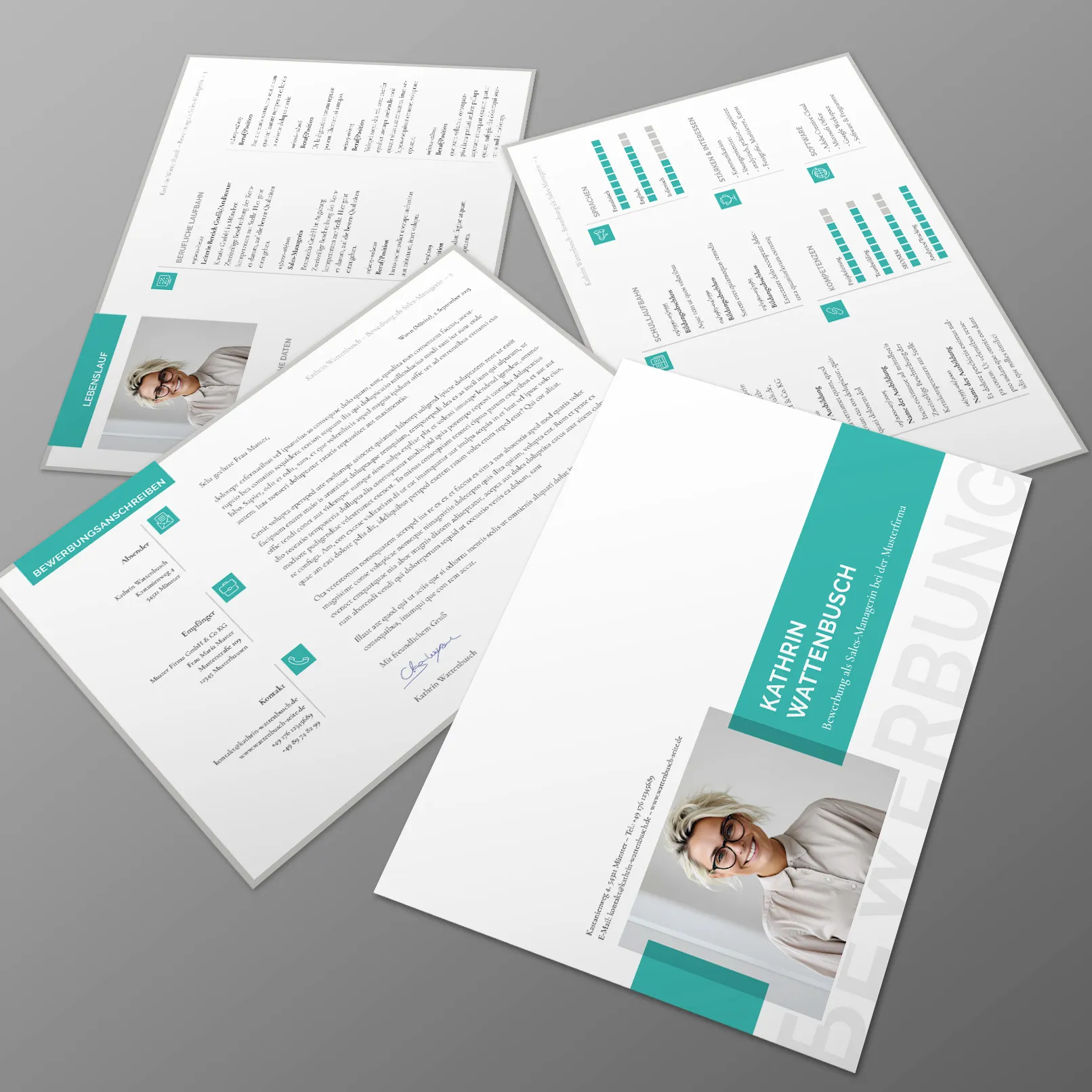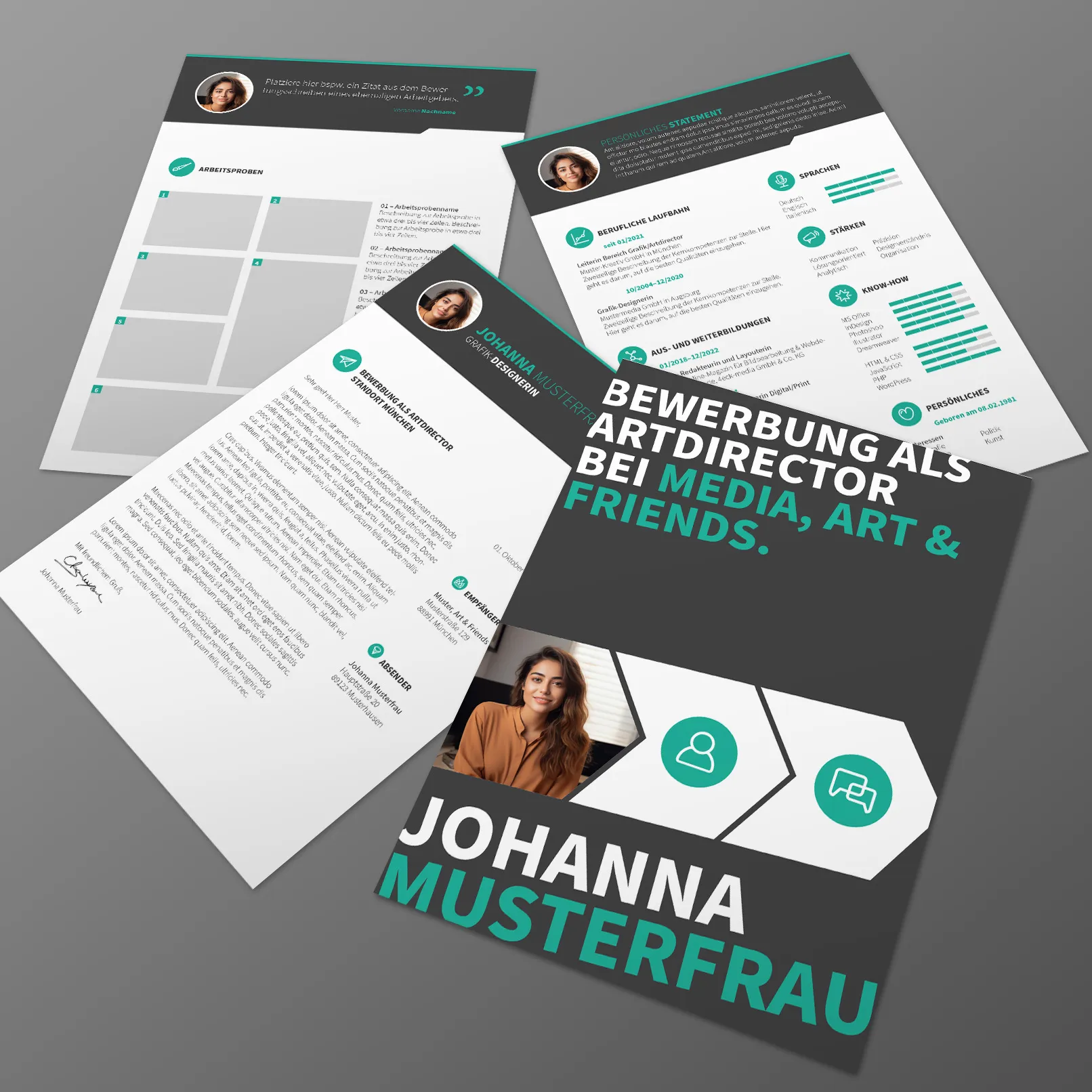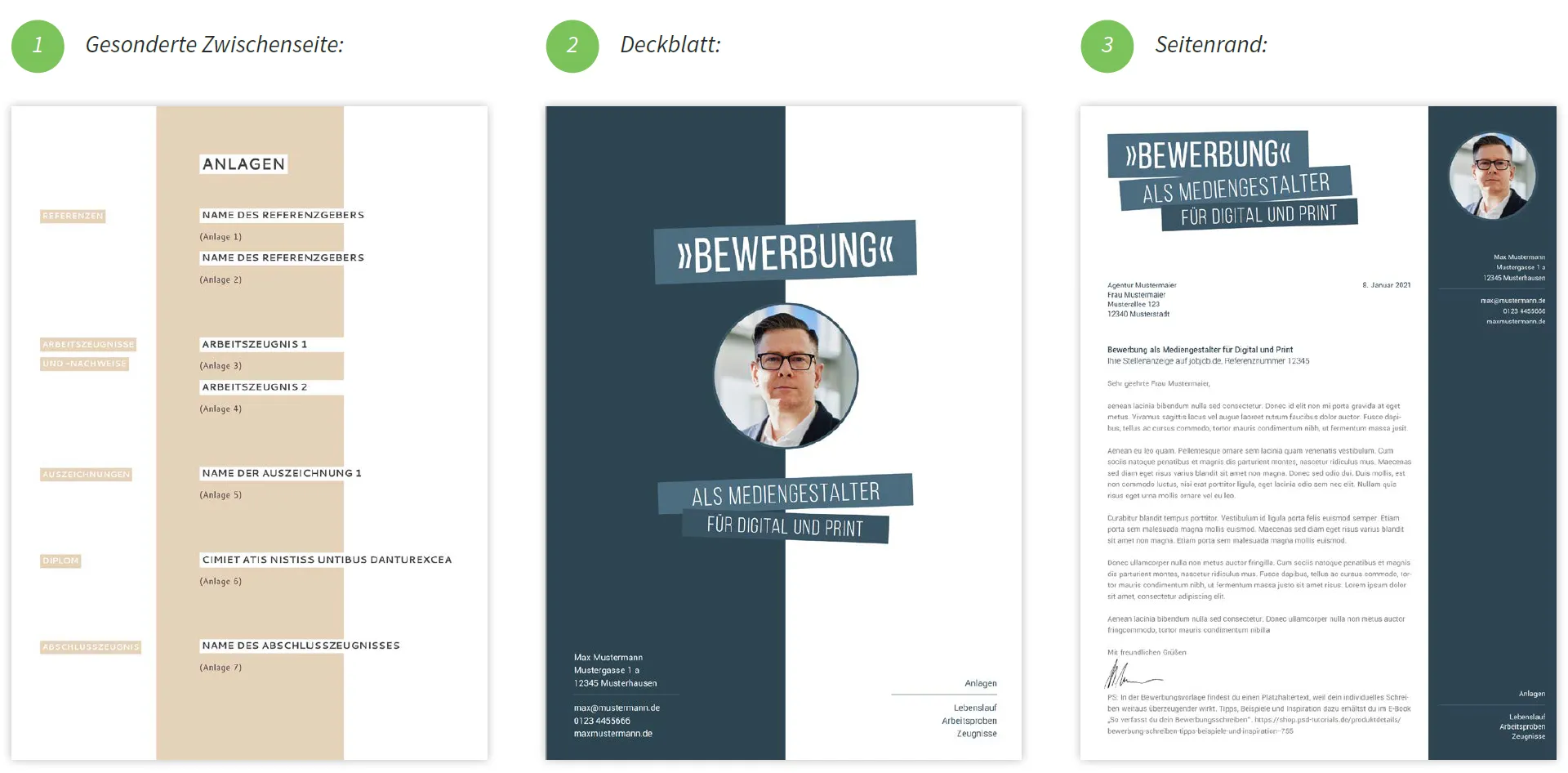Postscript (PS) in the application or not?! And if so, what should be there? And where do you place the list of attachments in your application documents? Let's clarify these questions here.

Postscript (PS) in the application: This line gets read!
Whether you include a postscript in your cover letter or not is entirely up to you. It's not obligatory. You place the PS under your signature. Use only one or two lines for it. Write the "PS" without periods and spaces. Place a colon after it ("PS:"). The PS line does not replace the last sentence of your cover letter but rather highlights a special distinguishing feature.
"PS" is the abbreviation for "postscript." The term comes from Latin and roughly means that here something is mentioned after ("post") the main writing ("scriptum"). If you use the line, be aware that it attracts attention. In other words, it's a good opportunity to make a strong final point!
Post Scriptum is a Latin term that literally translates to "after what has been written." It is used to add an additional remark or piece of information after the main text of a letter or document. The postscript typically follows the signature and is introduced with PS or P.S.
In times when letters were handwritten and there was no easy way to make corrections, it was more practical to add last-minute thoughts or forgotten information as a PS rather than rewriting the entire letter. Even today, in digital communication, the PS is still used, although it would be technically easier to edit the text. It has become an established stylistic device to emphasize specific information.
- Additional Information: A PS is used to add additional information, remarks, or comments that occurred to the writer after completing the main part of the letter or that should be placed separately for stylistic reasons.
- Emphasis: Sometimes a PS is also used to highlight important information since it often attracts more attention than the main text. You can leverage this for your application, as a postscript is often read attentively.
Refer, for example, to your website or online portfolio. Mention a period that would be particularly suitable for an interview. Highlight a special ability. Emphasize a benefit for the company that has not been mentioned before. Offer a phone call for feedback. Name a person who can provide information about you.

In the PS line, you can also place your details regarding salary expectations, start date, or a confidentiality notice, if not already stated in the conclusion of your cover letter.
- PS: For your video marketing, I have already outlined a concept which you can find at the end of the attachments in my application.
- PS: Your agency can also benefit from my enthusiasm for photography. If interested, check out my
online portfolio at (www.my-great-photography.com). - PS: On 8.1.2025, I will be in the Musterhausen area. I have time for an initial preliminary discussion in the morning.
- PS: From 8.1. to 20.1.2025, I will be on a business trip abroad in the EU. Before and after, I am happy to
attend an interview with you. - PS: I love trade show appearances! Therefore, I am willing to engage in national and international trade shows for your company.
- PS: For further questions about my application, I am available for a phone call. My number is
0123 456789. - PS: My former supervisor, Mr. Dr. Mustermann, is available to provide information about me. You can reach him at the
company Musterfirma at 0123 456789.

List of Attachments in the Application
Where to place it?
Well, if only it were that easy to answer. First, let's start with what is relatively clear: Simply overwrite the attachments in the application with the word "Attachments," without placing a colon. In the attachments, you can insert diplomas and work certificates, certificates of further education and training, certificates of specialized knowledge, references, or proofs of a stay abroad – everything that contributes to presenting your abilities.
However, beware: As is often the case, less can be more for the attachments too. Ideally, include documents that match the advertised position. Start with the certificate of your highest educational achievement, followed by work certificates. Then include other details.
Where to put the list now? That cannot be answered definitively. DIN 5008 allows for the possibility of listing the attachments under your signature. If the space is not sufficient, the attachments can also be placed to the right of your closing formula and signature. However, this classic representation is no longer really contemporary, often the space is simply lacking. One option is to attach a separate list of attachments, another is to list the attachments on the cover sheet.
Either way: Here you have leeway. However, consider the positioning of the attachments from the perspective of the person responsible for personnel. They want to be guided and quickly understand what your application contains.

Interesting facts about cover letters, application photos, and resumes
To land a really good job, you need to prepare thoroughly. A successful application starts with a professional photo. Many applicants make the mistake of just using a photo that suits them, but in reality, the picture should convey a professional impression. Invest in a photographer who has experience in creating application photos. A high-quality photo can make the crucial difference and show that you are willing to invest in your career. Or learn how to take a professional photo yourself to save time and costs.
Another important aspect is using a template for the application that matches the company's style. Research the company and its visual appearance in advance. If the company has a modern and creative style, your application should reflect this. A classic or modern resume can have different effects depending on the industry. Adapt the design of your application to show that you have dealt with the company culture. Use the download of resume templates in Word for free to find a suitable template.
The textual style of the cover letter also plays a crucial role. The cover letter should be formally correct and suitable for the desired position. For a creative position, you can write in a somewhat unconventional and personal manner, while for a position in finance, a serious and factual tone is appropriate. The structure and content of a cover letter should reflect your personality and at the same time underline your professionalism.
We have compiled a collection of really good articles for you to help you prepare for the job interview and get the job you deserve. These articles cover all the important aspects, from creating the resume (German-style resume) to composing the cover letter (Resume: What's important?) to tips for the job interview (Questions in the job interview). They provide valuable advice and practical examples to help you take your application to the next level.
Prepare well, invest in a professional photo, adjust your application to the company's style, and pay attention to appropriate text styling in the cover letter. With our articles, you are well-equipped to get the job you truly deserve. So, if you were able to clarify the attachment and P.S. in the application with this article, there is still much more to know about applications and resumes for you here.
